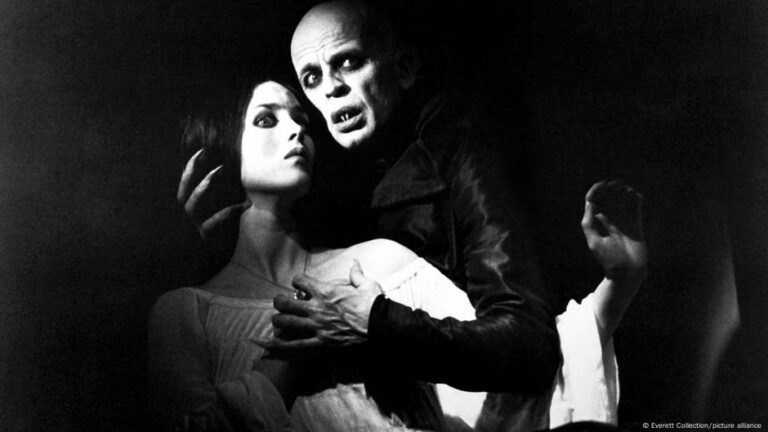The year is 1838. A young German real estate agent, Thomas Hutter, is tasked with traveling to far-off Transylvania to meet the mysterious Count Orlok regarding a house for sale. While journeying through the Carpathian Mountains, he is warned multiple times about Orlok, but he remains undeterred. Upon reaching the castle, the count — pale, cold and sinister — personally receives him. Hutter realizes too late that something is amiss in the castle: Orlok is a vampire.
Thus begins “Nosferatu — A Symphony of Horror,” the 1922 silent film classic by Friedrich Wilhelm Murnau, regarded today as a cinematic masterpiece. Murnau came up with a new way to depict fear and a sense of being threatened, laying the foundation for the modern horror film. The genre has many fans worldwide, and people often watch horror films on or around Halloween to get in the spooky spirit. But why are they so riveting?
Horror films: Psychological ‘boot camps’?
Horror films can be compared to roller coasters: Many people enjoy riding them because they love the thrill they get, even as they know it takes place in a safe environment.
German psychiatrist and neurologist Borwin Bandelow, who studies fear and the human mind, described how the body responds to such situations in an interview with German radio station Deutschlandfunk Kultur.
“When you ride a roller coaster, you feel like you’re going to fly out on the curves. Fear hormones flood your body,” Bandelow explained. But endorphins are simultaneously released, he added, relieving pain and causing feelings of euphoria. You know the ride has been tested for safety and that nothing can happen, but your brain reacts to the situation nonetheless, he said.
Horror films work on the same principles: We experience fear within a safe environment, whether seated on the sofa in our living room or in a plush cinema seat.
The horror genre is more than mere entertainment, however. US movie director Wes Craven (1939-2015) regarded horror films as a “boot camp for the psyche,” a sort of psychological training.
“In real life, human beings are packaged in the flimsiest of packages, threatened by real and sometimes horrifying dangers, events like [school shootings]. But the narrative form puts these fears into a manageable series of events. It gives us a way of thinking rationally about our fears,” he once said.
The science behind recreational fear
Since 2020, the Recreational Fear Lab at Aarhus University, Denmark, has been looking at “recreational fear,” or why people willingly place themselves in fear-inducing situations and what effect this has or can have.
One of the Lab’s findings is that controlled recreational fear can positively influence an individual’s ability to deal with stress. Individuals develop strategies for dealing with fear and negative feelings, Mathias Clasen, the co-director of the Recreational Fear Lab, explained, describing it as a form of personal emotional development.
Clasen is convinced that people who watch horror films don’t just passively consume but rather actively apply strategies to reach a “sweet spot of fear” — the point at which the greatest amount of enjoyment is experienced. If something is too frightening, enjoyment goes down.
The catch here is that each individual’s sweet spot varies; people need more or less fear to reach it, which is why some people avoid horror movies and others can’t get enough. Unlike those who dislike horror, fans expect to feel joy, Clasen explained. They enjoy dealing with negative emotions in a playful way, he added.
Fear as learning tool
Clasen worked with US psychologist Coltan Scrivner, among others, to identify three types of horror fans: “Adrenaline junkies,” who enjoy the immediate kick they get; “White Knucklers,” for whom horror isn’t so much about fun but rather personal growth; and “Dark Copers,” who experience both mood boosting and increased self-insight and personal development.
Researchers at the Recreational Fear Lab employ this schema but point out that the field remains relatively unexplored, with many unanswered questions.
Nevertheless, one thing is clear: For fear to serve as a learning tool, it must be the right amount. Clasen warns that it can easily become too much — an issue that surfaces around Halloween. Some amusement parks with Halloween-themed attractions also offer “monster-free zones” where younger children in particular can have fun without being scared.
This article was originally published in German.


